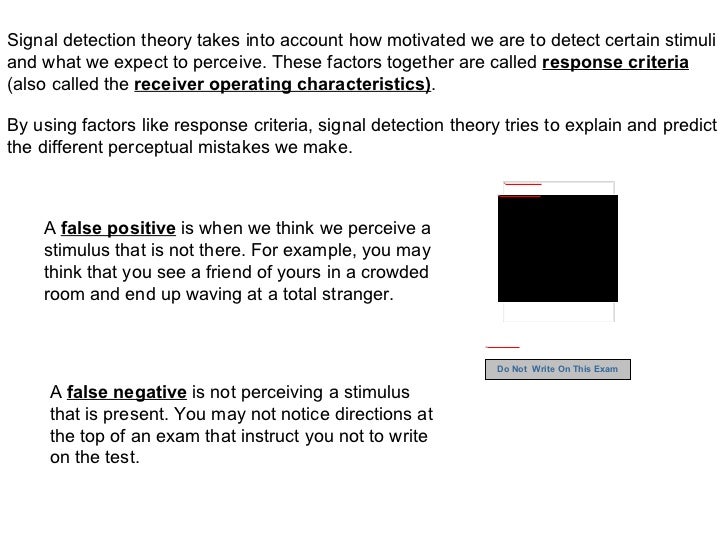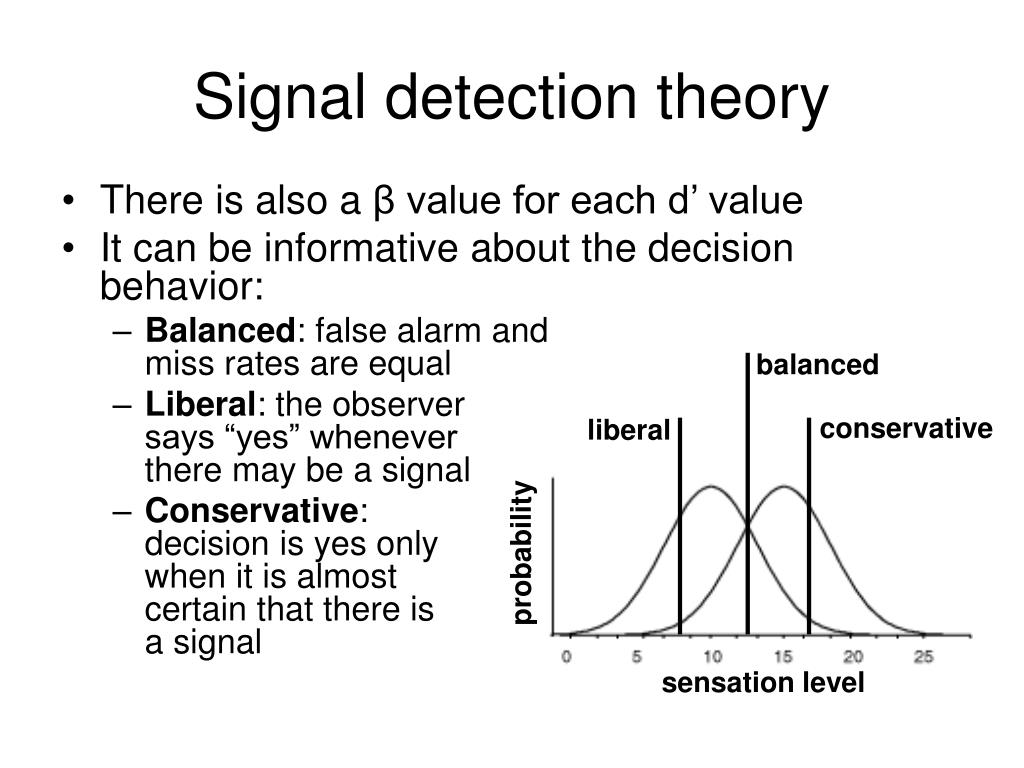
Other publications examine how closely human decision-making approaches the theoretical optimum described by SDT. A frequent goal is to demonstrate how the understanding of a particular phenomenon changes when sensitivity is distinguished from bias.

Indeed, the literature is filled with publications that apply SDT to a wide range of problems. These measures are now routinely assessed in such diverse areas as memory, medicine and clinical diagnosis, library science, weather forecasting, and hazard detection by motor vehicle operators. These early SDT publications derived “pure” measures of sensitivity, including d’ and A’, and “pure” measures of bias, such as β and c. For example, the percentage of correct responses is often conceptualized as reflecting sensitivity, but it changes when bias changes. Early SDT publications demonstrated that common performance measures confound sensitivity and bias. A listener will more likely report hearing a faint tone when each hit earns $10 and each false alarm costs $1 (bias is set to favor hits), than when the rewards and penalties are reversed (bias is set to avoid false alarms). Bias is the tendency to state that a signal is present, and it also affects hit and false alarm rates. For example, sensitivity to an auditory tone increases when the tone becomes louder or when the noise in which it is presented becomes quieter. Sensitivity is the ability to distinguish the presence of a signal from its absence. A key notion here is that perception involves decision: Was that faint tone simply imagined, or was it actually presented? SDT addresses this problem by recognizing that hit and false alarm rates reflect two factors, sensitivity and bias.

A challenge similar to the detection of signals by radars arises when humans listen for weak auditory stimuli. However, radars may also mistake noise for signals these events are false alarms, and the corresponding probability is the false alarm rate.

As radars become more sensitive (capable of detecting weaker and weaker signals), they are increasingly able to correctly detect when signals are present these events are called hits, and their probability of occurrence is the hit rate. A "utilized" signal detection theory offers the possibility of expanding the phenomena that can be understood within a decision-making framework.Signal detection theory (SDT) was originally developed to describe the performance of radars, which must detect signals against a background of noise. This utility approach to signal detection theory clarifies otherwise enigmatic influences of perceptual uncertainty on measures of decision-making performance (accuracy and optimality) and on behavior (an inverse relationship between bias magnitude and sensitivity optimizes utility). In this tutorial, we show how incorporating the economic concept of utility allows signal detection theory to serve as a model of optimal decision making, going beyond its common use as an analytic method. Signal detection theory describes these types of decisions. What do inferring what a person is thinking or feeling, judging a defendant's guilt, and navigating a dimly lit room have in common? They involve perceptual uncertainty (e.g., a scowling face might indicate anger or concentration, for which different responses are appropriate) and behavioral risk (e.g., a cost to making the wrong response).


 0 kommentar(er)
0 kommentar(er)
